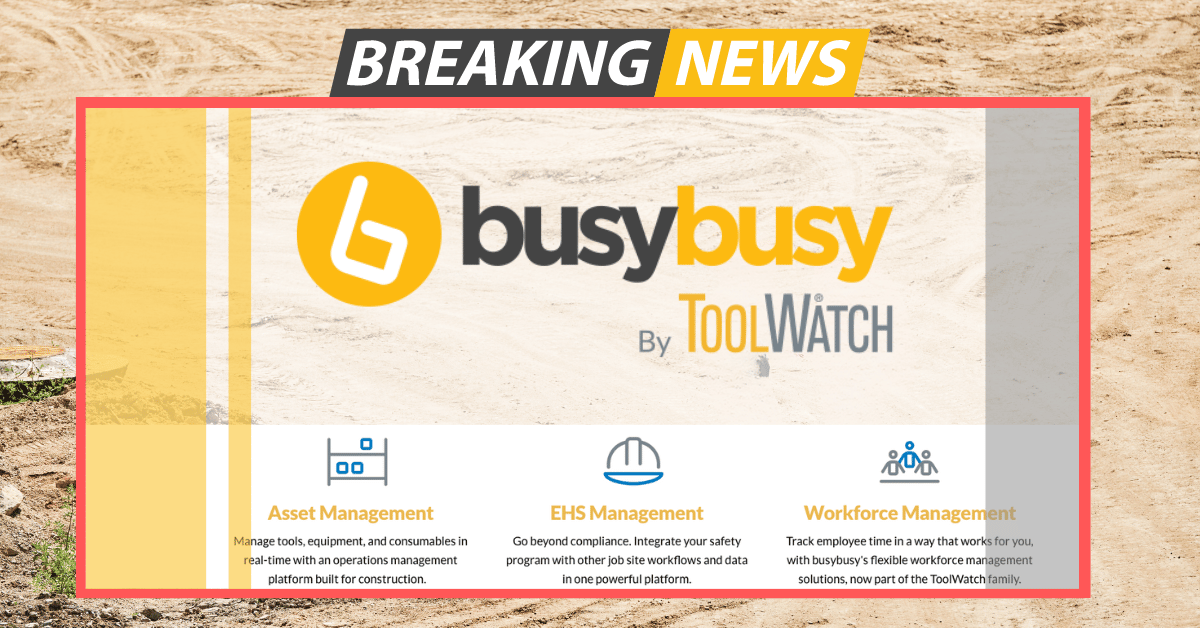
When it comes to achieving long-term success in the construction industry, there are a lot of different variables that come into the equation. External factors will always play a role, like the general economic climate, demographic patterns, local population trends and local real estate values. Don’t let these ever-changing factors prevent you from being a top construction company.
Generally speaking, though, successful firms will survive in the bad times and thrive in the good times. On the other hand, some contractors will struggle to get ahead in good times and bad. Any serious setback could be the final blow that leads them to bankruptcy and the loss of good jobs and future prospects for the entire team.
The Leader Only Wins When the Team Wins
In the introduction to his classic book, The Five Dysfunctions of a Team: A Leadership Fable, Patrick Lencioni starts out by saying:
“Not finance. Not strategy. Not technology. It is teamwork that remains the ultimate competitive advantage, both because it is so powerful and so rare.”
(Jossey-Bass, 2002. Lencioni, P.)
The emphasis on teamwork is well placed, no doubt. But the team sure better be focused on finance, on strategy, and on technology, or else there soon won’t be anywhere for the team to play.
Internal Company Values Make All the Difference
The 5 key areas where companies hold the power to control their own fate are not really separate functions in practice. Just as in a human body, all the vital systems must work in concert, so in a corporate body, the health of each area depends on the health of the others.
Following the body example and starting with the head, the 5 qualities of a good construction company are leadership, planning, job performance, project management, and accounting. In each of these areas, certain pathological tendencies can emerge, and certain antidotes can be put in place to fight off the disease and keep the body healthy and strong.
1. Leadership
The quality of company leadership will influence everything the company does. Leadership includes more than the CEO or owner. It applies to department leaders, crew and site supervisors, office managers, job site mentors and new-hire trainers.
Quite often, problems with leadership are the opposite of what might seem like obvious leadership failings. It’s not usually a lack of care and attention that causes problems. It’s more common that over-confidence leads to over-commitment beyond what can be successfully delivered.
Another potential problem is too much involvement in the details of day-to-day job performance. This can blind company leaders to bigger issues and trends until it’s too late to respond effectively.
Effective leadership at all levels of the business comes from following a set of principles embraced by the whole team. Leadership by example is still the most powerful influence for setting up the following behaviors as “company policy.”
- clear and consistent two-way communication about goals, values, roles, responsibilities, and expectations.
- delegation of work roles among the team while retaining responsibility and ultimate accountability for outcomes.
- create a climate of trust, transparency and mutual accountability around safety, productivity, profitability, and sense of company purpose.
2. Planning
One of the primary jobs of leaders is to make good plans. This is another area where teamwork plays a critical role. Plans need to focus on both the risks and rewards of opportunities. All the details that will affect the outcome need to be considered.
Good leadership practice will ensure that planners have reliable, relevant data. This kind of planning leads to the adoption and integration of construction management software platforms like Procore, one of the market leaders, or one of the many competing packages.
That means reports from accounting will reflect accurate actual costs and billings for every project. This comes from work teams adopting the speed and accuracy of a smartphone timekeeping app like busybusy, one of the market leaders in real time labor, equipment, and location tracking software.
Plans that emerge from this kind of rigorous process will be clearly defined with measurable benchmarks. Because of this level of detail, realistic incentive targets and rewards can be set up to motivate teams and individuals to “game the system” in such a way that everybody wins.
3. Job Performance
In the top construction companies, onsite job performance is the core nexus of the project value chain. The ability of onsite workers to access tools and materials as needed, equipment as needed, subcontractors, and other services as needed, represents the living, daily calculation of project profit and loss.
All the planning and preparation boils down to the actual boots on the ground and the quality and speed of their execution of the job. As they do the work, they keep accurate track of labor costing, equipment utilization, and job details by task and project component.
The onsite crews know that the quality of their record-keeping determines the quality of the planning, which is related to the quality of their earning power, and the health of the company as a whole.
4. Project Management
As a result of the comprehensive, conscientious project data collection and analysis made possible by technology, training, and teamwork, the project management phase of the business is a much more productive tool.
Crews, equipment, and work site activities automatically feed data to accounting and planning. Resources can be assessed and allocated in advance with confidence. They can be re-allocated on the fly in an instant when things unexpectedly change. Budget and schedule status are always current and measurable against the benchmarks set out in the planning stage.
5. Accounting
If leadership represents the head of the corporate body, accounting may represent the feet, or the ability of the company to stand on its own. Positive reports from the bottom line provide the fuel to keep the whole business cycle running.
High-quality accounting data represents the actual health and stamina of the company. This will determine how fast the business moves forward. Whether it’s able to move from the last job to the next. Or run like the wind, and leap tall buildings in a single bound. And this feeds the planning stage for the cycle to begin again.
Integrate Systems and People From Top to Bottom
Not every construction company owner wants to be the business equivalent of an Olympic athlete. But everyone wants to be healthy enough to feel good and enjoy a long, productive life. Follow these 5 keys to business success and you’ll be in good shape for the long run.











